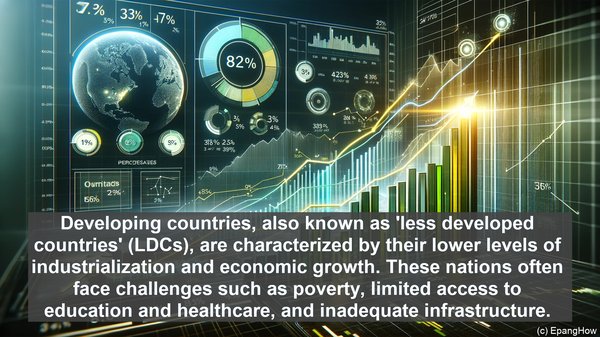Introduction: A World of Contrasts
Hello everyone! In today’s video, we’ll be exploring the distinction between developing and developed countries. It’s a topic of immense significance, as it shapes our understanding of the world’s diverse economies, cultures, and challenges.
Defining Developing Countries
Developing countries, also known as ‘less developed countries’ (LDCs), are characterized by their lower levels of industrialization and economic growth. These nations often face challenges such as poverty, limited access to education and healthcare, and inadequate infrastructure.
The Markers of Developed Countries
On the other hand, developed countries boast advanced economies, high standards of living, and robust infrastructure. These nations have typically invested in education, healthcare, and technology, resulting in well-established industries and a strong workforce.

Economic Factors: The Core Distinction
One of the key factors distinguishing developing and developed countries is their economic growth. Developed nations often have diverse economies, with thriving sectors such as finance, manufacturing, and technology. In contrast, developing countries may heavily rely on agriculture or natural resources, making their economies more vulnerable to fluctuations.
Infrastructure: Building the Foundation
Infrastructure, including transportation networks, energy systems, and communication facilities, is crucial for a country’s development. Developed nations have well-connected cities, efficient public transportation, and reliable utilities. In developing countries, however, inadequate infrastructure can hinder progress and limit access to essential services.
Education: Empowering the Future
Education plays a pivotal role in a country’s development. Developed countries often have comprehensive education systems, with a focus on both academic and vocational training. This equips their citizens with the skills needed for a competitive job market. In contrast, developing countries may face challenges such as limited school resources and high dropout rates.

Healthcare: A Vital Indicator
Access to quality healthcare is a crucial indicator of a country’s development. Developed nations typically have well-established healthcare systems, with advanced medical facilities and comprehensive coverage. In developing countries, however, healthcare may be limited, leading to higher mortality rates and lower life expectancies.
